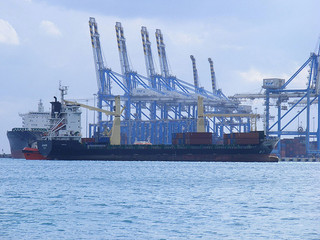 Despite vessel capacity growth exceeding cargo growth over the past two years, much more is still being lined up by carriers even less capable of affording it.
Despite vessel capacity growth exceeding cargo growth over the past two years, much more is still being lined up by carriers even less capable of affording it.
This means that the capacity of ultra-large container vessels (ULCVs) over 10,000 TEUs (20-foot-equivalent units) will increase by 31.4 percent this year, followed by a further 30 percent in 2015, forecasts Drewry Maritime Research.
Continuous orders for ULCVs reinforce the view that large and small carriers “are determined to stay in the race for more competitive economies of scale even though cargo growth is unlikely to be enough to fill all of their newbuilds over the next two years,” noted Drewry.
“It seems to be a case of ‘do or die,’ with dying not an option because creditors would then never get any of their money back,” it continued.
Though some of the deliveries will be delayed, Drewry ponders where the cargo to fill the new vessels will come from, since the ships are mostly designed for the Asia-Europe trade lane where westbound cargo growth last year was less than 4 percent. It was an even lower 2 percent to Northern Europe, where average vessel size already exceeds 10,500 TEUs.
Although only 34 of the 44 vessels of over 10,000 TEUs in capacity scheduled for delivery in 2013 actually came into service, 20 of which went into Asia-North Europe schedules, the ownership of the 60 vessels due out this year, and of the 68 due in 2015, is completely different.
Smaller carriers’ share of vessels of over 10,000 TEUs—that is, all shipping lines excluding Maersk Line, Mediterranean Shipping Co., and CMA CGM—will grow from 45 percent in 2013 to 57 percent by the end of 2016.
As cargo growth in the Asia-Europe trade lane will be inadequate to accommodate the extra vessels, some of them may have to be deployed in other trade lanes. “But, were this to happen, much of their economies of scale will be lost as ULCVs are only profitable when well utilized.” said Drewry.
A possible move is for China Shipping Container Lines, United Arab Shipping Company, and Evergreen Line to either form an alliance or join one of the other alliances formally. Existing alliances must also be considering further expansion of their global networks to help soak up the extra capacity over the next two years, said Drewry.
Photo: sludgegulper




